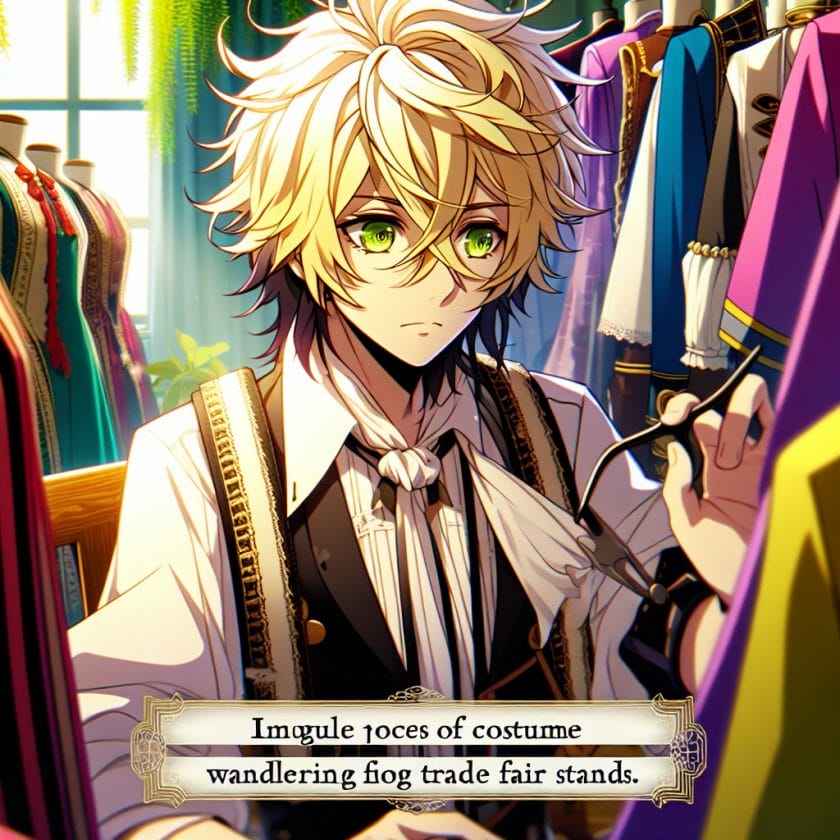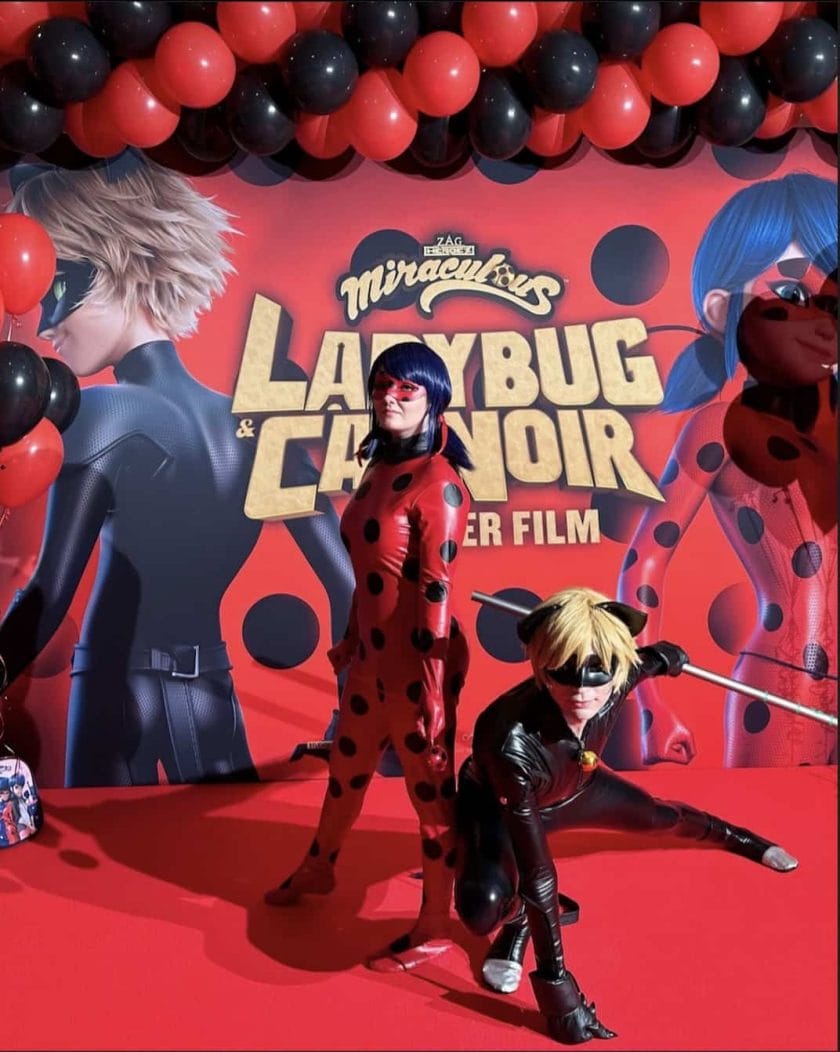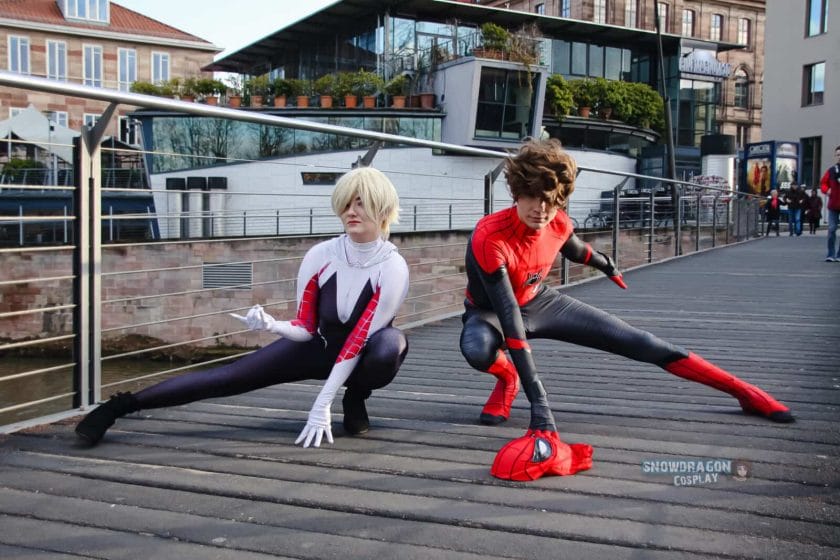[publishpress_authors_box layout="ppma_boxes_840322"]

1. The Origin of the Term “Kawaii” in Japanese Culture
The Cute Revolution: How “Kawaii” Took Over Japan
Picture this: It’s a sunny afternoon in Tokyo, and I’m strolling through the bustling streets of Harajuku. Everywhere I look, there are vibrant colors, adorable characters, and an overwhelming sense of cuteness. This is the birthplace of “kawaii,” a cultural phenomenon that has captured the hearts of people all over Japan.
Believe it or not, the term “kawaii” actually originated in the 1970s as a way to describe something cute or lovable. It quickly became popular among teenagers who embraced its playful and innocent aesthetic. But it wasn’t until the 1980s that “kawaii” truly exploded onto the scene.
A Marketing Strategy Turned Cultural Phenomenon
In an effort to appeal to a younger audience, companies began using cute and cuddly mascots to promote their products. These mascots were designed with big eyes, round faces, and exaggerated features – all characteristics that are now synonymous with “kawaii.” As these mascots gained popularity, so did the term itself.
Soon enough, “kawaii” was everywhere – from fashion trends to anime characters to everyday objects like stationary and home decor. It became a symbol of youthfulness and innocence in Japanese culture.
Kawaii-ifying Everything: The Spread Beyond Japan
Fast forward to today, and “kawaii” has transcended borders. It’s not just a Japanese thing anymore – it’s a global phenomenon. People all over the world have fallen in love with the adorable charm of “kawaii.”
So next time you see someone sporting a cute Hello Kitty backpack or a Pikachu onesie, remember that it all started with the simple desire to make things a little bit cuter. And in a world that can sometimes be overwhelming, who can resist the allure of “kawaii”?
Key Points:
- “Kawaii” originated in the 1970s as a term to describe something cute or lovable.
- Companies in Japan began using cute mascots to appeal to younger audiences, leading to the spread of “kawaii” culture.
- “Kawaii” has now become a global phenomenon, with people around the world embracing its adorable charm.
2. Defining the Meaning of “Kawaii” in Japanese
2.1 Origins and Etymology
The term “kawaii” originated in Japan and is derived from the phrase “kawaisou,” which means “pitiful” or “pathetic.” Over time, it has evolved to take on a more positive connotation, referring to something cute, charming, or endearing. The etymology of the word reflects the cultural shift in Japan towards valuing cuteness and innocence.
2.2 Cultural Significance
In Japanese culture, “kawaii” is not just an aesthetic preference but is deeply ingrained in various aspects of society. It influences fashion trends, consumer products, entertainment, and even interpersonal relationships. The concept of “kawaii” represents a desire for purity and simplicity, providing an escape from the pressures and complexities of everyday life.
Examples:
– Hello Kitty: One of the most iconic examples of “kawaii” is Hello Kitty, a fictional character created by Sanrio. With her round face, large eyes, and minimalistic design, Hello Kitty embodies the essence of cuteness.
– Pokmon: Another popular example is the Pokmon franchise. The adorable creatures known as Pokmon are designed to be irresistibly cute and have become beloved characters worldwide.
3. Common Contexts for Using the Term “Kawaii” in Japan
3.1 Fashion
In Japanese fashion, “kawaii” plays a significant role. Many young people embrace styles such as Lolita fashion or Decora fashion that emphasize cuteness through frilly dresses, pastel colors, and excessive accessories.
3.2 Consumer Products
The influence of “kawaii” can be seen in a wide range of consumer products in Japan. From stationery and household items to food packaging and toys, there is a strong emphasis on cute and playful designs that appeal to consumers of all ages.
Examples:
– Character Goods: Products featuring popular “kawaii” characters like Hello Kitty or Rilakkuma are highly sought after in Japan. These characters can be found on everything from clothing and accessories to home decor and electronics.
– Bento Boxes: The art of creating adorable bento boxes, known as “kyaraben,” has become a popular trend in Japan. These lunch boxes feature elaborately arranged food designed to resemble cute characters or animals.
4. Popular “Kawaii” Characters and Objects in Japan
4.1 Sanrio Characters
Sanrio, the company behind Hello Kitty, has created numerous other beloved “kawaii” characters such as My Melody, Little Twin Stars, and Pompompurin. These characters have gained immense popularity through their cute designs and relatable personalities.
4.2 Anime and Manga Characters
Many anime and manga series feature characters that embody the “kawaii” aesthetic. Examples include Pikachu from Pokmon, Totoro from Studio Ghibli’s “My Neighbor Totoro,” or Sailor Moon from the eponymous series.
List of Popular Kawaii Characters:
– Hello Kitty
– Pikachu
– Doraemon
– Rilakkuma
– Gudetama
– Pusheen
Note: This list is not exhaustive but provides an overview of some widely recognized “kawaii” characters in Japan.
5. Influence of “Kawaii” on Japanese Fashion and Design
Impact on Fashion Trends
The concept of “kawaii” has had a significant influence on Japanese fashion and design. One of the most notable impacts is the rise of the “Lolita” fashion subculture, which embraces cute and doll-like aesthetics. Lolita fashion features frilly dresses, oversized bows, and delicate accessories, all inspired by the idea of kawaii. Additionally, many Japanese streetwear brands incorporate kawaii elements into their designs, such as pastel colors, cartoon characters, and playful prints. The popularity of these styles both within Japan and internationally reflects the widespread appeal of kawaii in fashion.
Incorporation in Design Principles
Kawaii also plays a role in Japanese product design. From stationery to home appliances, many products are designed with cute and whimsical features that evoke a sense of joy and happiness. This can be seen in the use of rounded shapes, vibrant colors, and adorable characters in packaging and branding. By incorporating kawaii elements into their designs, Japanese designers aim to create products that not only serve their functional purpose but also bring delight to consumers.
Kawaii as an Expression of Individuality
In addition to influencing trends and design principles, kawaii serves as a means for individuals to express their own identity. Many people in Japan embrace kawaii fashion as a way to stand out from societal norms or challenge traditional beauty standards. By wearing clothing or accessories that are considered cute or childlike, individuals can assert their unique style and showcase their creativity.
6. Characteristics that Make Something “Kawaii” in Japanese Culture
Cuteness Factors
In Japanese culture, several characteristics contribute to something being perceived as kawaii. These include round shapes, soft colors, and exaggerated features. For example, large eyes are often associated with cuteness in Japan, as they resemble the eyes of a baby or a cute animal. Additionally, small and compact sizes can also enhance the kawaii appeal of an object or character.
Playfulness and Innocence
Another characteristic of kawaii is its association with playfulness and innocence. Cute characters often exhibit childlike behaviors or expressions, which evoke feelings of warmth and nostalgia. The innocence portrayed by these characters creates a sense of comfort and escapism for individuals who engage with kawaii culture.
Emotional Connection
Kawaii is not just about visual aesthetics; it also elicits emotional responses. The charm of kawaii lies in its ability to evoke positive emotions such as happiness, joy, and affection. Whether through adorable characters or cute designs, experiencing kawaii can create a sense of emotional connection and uplift one’s mood.
7. Perception and Understanding of “Kawaii” in Japan vs Other Countries
Cultural Context
The perception and understanding of “kawaii” differ between Japan and other countries due to cultural context. In Japan, kawaii is deeply ingrained in society from childhood through various media influences like manga, anime, and advertising. As a result, Japanese people readily embrace the concept across different aspects of their lives. However, in other countries where these cultural influences are less prevalent, the understanding and acceptance of kawaii may vary.
Interpretation Differences
Furthermore, the interpretation of what is considered cute can vary across cultures. While some elements may be universally recognized as cute (e.g., baby animals), others might be culturally specific. For instance, certain kawaii characters or fashion styles that are popular in Japan may not resonate with individuals from other countries who have different aesthetic preferences or cultural references.
Commercialization and Globalization
The increasing globalization and commercialization of kawaii have also influenced its perception outside of Japan. Kawaii has become a global phenomenon, with many people around the world embracing its cuteness and incorporating it into their own cultures. However, as kawaii becomes more mainstream internationally, there is a risk of diluting its original meaning and cultural significance. It is important to strike a balance between appreciating and respecting the roots of kawaii while allowing for its adaptation in different cultural contexts.
8. Evolution of the Meaning and Usage of “Kawaii” in Japanese Society
Historical Origins
The term “kawaii” has evolved over time in Japanese society. Initially, it referred to the quality of being lovable or endearing. In traditional Japanese aesthetics, there was an appreciation for delicate beauty and understated elegance, which differed from the concept of kawaii as it is understood today. However, with the rise of consumer culture and the influence of popular media, kawaii gradually shifted towards a more vibrant and playful aesthetic.
Mainstream Popularity
In recent decades, kawaii has become increasingly mainstream in Japan. It is no longer limited to certain subcultures but has permeated various aspects of society, including fashion, entertainment, advertising, and even government initiatives promoting tourism. This widespread acceptance reflects how kawaii has evolved from a niche concept to an integral part of contemporary Japanese culture.
Expanding Definitions
The meaning of kawaii continues to expand beyond visual aesthetics. It now encompasses broader ideas such as kindness, empathy, and positivity. Kawaii can be seen as a way to counterbalance the pressures and stresses of modern society by embracing innocence, simplicity, and lightheartedness. As Japanese society continues to evolve, so too does the meaning and usage of kawaii, adapting to the changing needs and values of its people.
9. Negative Connotations Associated with Being Described as “Kawaii” in Japan
Infantilization
Despite its widespread popularity, being described as “kawaii” in Japan can have negative connotations for some individuals. In certain contexts, being associated with cuteness can be seen as infantilizing or undermining one’s maturity or capabilities. This is particularly relevant in professional settings where appearing too cute may be perceived as unprofessional or lacking seriousness.
Gender Stereotypes
Another criticism of kawaii culture is its reinforcement of gender stereotypes. The emphasis on cute and girlish aesthetics can perpetuate societal expectations for women to conform to traditional feminine ideals. This can limit individual expression and reinforce gender norms that may not align with everyone’s preferences or identities.
Superficiality
Some critics argue that the obsession with kawaii in Japanese society promotes superficiality and consumerism. The focus on appearance and cuteness can overshadow other qualities such as intelligence or talent, leading to a culture that values style over substance. However, it is important to note that these criticisms do not apply universally and are subjective interpretations of kawaii culture.
10. Role of “Kawaii” in Marketing and Advertising Strategies in Japan
Appealing to Emotions
Kawaii plays a significant role in marketing and advertising strategies in Japan due to its ability to evoke positive emotions. Companies often incorporate cute characters or designs into their branding to create a sense of familiarity, warmth, and approachability. By associating their products or services with kawaii aesthetics, businesses aim to establish emotional connections with consumers and increase brand loyalty.
Targeting Specific Demographics
Kawaii is also used strategically to target specific demographics. For example, many products and advertisements aimed at children or young adults feature cute mascots or characters that resonate with their preferences. Additionally, kawaii aesthetics are often employed in marketing campaigns for female-oriented products such as cosmetics, fashion, and personal care items.
Enhancing Product Appeal
Incorporating kawaii elements can enhance the appeal of a product or service by making it more visually appealing and memorable. The use of cute packaging or adorable mascots can attract attention and differentiate a brand from its competitors. This strategy is particularly effective in industries where the functional benefits of a product may be similar across different brands, creating a need for differentiation through emotional appeal.
11. Cultural Events Celebrating All Things “Kawaii” in Japan
Kawaii Festivals
In Japan, there are various cultural events dedicated to celebrating all things kawaii. One such event is the “Kawaii Matsuri” (Cute Festival) held annually in Tokyo. This festival showcases kawaii fashion shows, pop-up shops selling cute merchandise, live performances by popular idol groups, and interactive activities where attendees can immerse themselves in the world of kawaii.
Kawaii-themed Cafes and Exhibitions
Kawaii-themed cafes and exhibitions have also become popular attractions in Japan. These venues offer unique dining experiences where customers can enjoy food and drinks adorned with cute decorations or shaped into adorable characters. Similarly, kawaii exhibitions feature art installations and interactive displays that celebrate the cuteness aesthetic while providing opportunities for visitors to engage with kawaii culture.
Kawaii Parades and Cosplay Events
Kawaii parades and cosplay events are another way for people in Japan to express their love for all things cute. These events often take place in major cities, where participants dress up as their favorite kawaii characters or showcase their own creative interpretations of cuteness. The parades and cosplay events serve as platforms for individuals to share their passion for kawaii and connect with like-minded enthusiasts.
12. Impact of Social Media on the Global Spread of “Kawaii”
Visual Sharing Platforms
Social media platforms such as Instagram, TikTok, and Pinterest have played a significant role in the global spread of kawaii culture. These platforms allow users to easily share visual content that embodies the aesthetics of kawaii, enabling individuals from around the world to discover and appreciate cute fashion, art, and lifestyle trends originating from Japan.
Influencer Culture
The rise of influencer culture has also contributed to the popularity of kawaii on social media. Influencers who embrace kawaii aesthetics attract large followings by sharing their personal style, product recommendations, or showcasing cute experiences. Their influence helps promote kawaii culture beyond its traditional boundaries and introduces it to new audiences globally.
Online Communities and Fanbases
Social media has facilitated the formation of online communities and fanbases centered around kawaii culture. People with shared interests can connect, exchange ideas, and support each other’s creativity through hashtags, forums, or dedicated groups. This sense of community fosters a sense of belonging among individuals who appreciate kawaii outside of Japan.
13. Connection Between “Kawaii” and Traditional Japanese Aesthetics or Art Forms
Influence of Edo Period Art
The concept of kawaii can be traced back to certain aspects of traditional Japanese aesthetics and art forms. For example, the ukiyo-e woodblock prints from the Edo period often depicted scenes with cute or charming elements. These prints featured playful characters, vibrant colors, and whimsical landscapes, which laid the foundation for the visual language of kawaii.
Harmony with Wabi-Sabi
Kawaii aesthetics also share a connection with the Japanese aesthetic principle of wabi-sabi, which celebrates imperfection and transience. Both concepts appreciate simplicity, natural beauty, and finding joy in small details. Kawaii’s emphasis on cuteness can be seen as an extension of this appreciation for the simple joys in life.
Kawaii and Traditional Crafts
Kawaii culture has influenced traditional crafts in Japan as well. Some artisans incorporate cute motifs or playful designs into their creations while maintaining traditional craftsmanship techniques. This fusion of kawaii aesthetics with traditional crafts helps preserve cultural heritage while appealing to contemporary tastes.
14. Embracing and Appreciating “Kawaii” Outside of Japan
Inspiring Fashion Trends
Kawaii has inspired fashion trends outside of Japan, particularly in Asian countries such as South Korea and Taiwan. The influence of Japanese street fashion and kawaii subcultures can be seen in the popularity of pastel colors, oversized accessories, and cute patterns among young people in these regions. Additionally, Western fashion designers have also incorporated kawaii elements into their collections, showcasing its global appeal.
Creative Subcultures
Outside of fashion, kawaii has sparked creative subcultures around the world. Artists and illustrators draw inspiration from kawaii aesthetics to create cute and whimsical artwork. DIY enthusiasts create kawaii-themed crafts and accessories. These subcultures provide platforms for individuals to express their creativity, share their love for kawaii, and connect with others who appreciate the cuteness aesthetic.
Kawaii-Influenced Entertainment
Kawaii has also influenced entertainment industries outside of Japan. Anime and manga, which often incorporate kawaii elements, have gained a global following. Kawaii-inspired characters have become popular in video games and digital media. The spread of these forms of entertainment has introduced people from diverse backgrounds to the charm of kawaii culture.
15. Globalization’s Influence on the Perception and Acceptance of “Kawaii”
Cultural Exchange
Globalization has led to increased cultural exchange, allowing people from different countries to learn about and appreciate kawaii culture. Through travel, international media, or online communities, individuals are exposed to the cuteness aesthetic and its significance in Japanese society. This exposure fosters understanding and acceptance of kawaii beyond its original cultural context.
Adaptation in Different Cultures
As kawaii gains popularity worldwide, it undergoes adaptations in different cultures to align with local preferences and values. For example, while the visual aesthetics may remain similar, the interpretation of cuteness can vary based on cultural references or individual experiences. This adaptation allows for a more inclusive understanding of kawaii that reflects diverse perspectives.
Commercialization
In conclusion, “kawaii” is a Japanese term that represents cuteness and charm. It has become popular worldwide, reflecting Japan’s unique culture. If you’re fascinated by this adorable concept, why not dive deeper into the world of kawaii with our cosplay services? We offer a range of options to help you embrace your favorite kawaii characters and bring them to life. So, don’t miss out! Check out our cosplay services today and let your kawaii dreams come true!
https://images-wixmp-ed30a86b8c4ca887773594c2.wixmp.com/f/16b0dff3-2efb-4250-9abe-d258eb21a7da/dcpay2r-aebe16ba-c636-4d5e-b770-c0854cb4d673.png?token=eyJ0eXAiOiJKV1QiLCJhbGciOiJIUzI1NiJ9.eyJzdWIiOiJ1cm46YXBwOjdlMGQxODg5ODIyNjQzNzNhNWYwZDQxNWVhMGQyNmUwIiwiaXNzIjoidXJuOmFwcDo3ZTBkMTg4OTgyMjY0MzczYTVmMGQ0MTVlYTBkMjZlMCIsIm9iaiI6W1t7InBhdGgiOiJcL2ZcLzE2YjBkZmYzLTJlZmItNDI1MC05YWJlLWQyNThlYjIxYTdkYVwvZGNwYXkyci1hZWJlMTZiYS1jNjM2LTRkNWUtYjc3MC1jMDg1NGNiNGQ2NzMucG5nIn1dXSwiYXVkIjpbInVybjpzZXJ2aWNlOmZpbGUuZG93bmxvYWQiXX0.IRASGeshQ8Qwz-JdrBu2CU0jEF_mvj27zAoXUnl19FY








